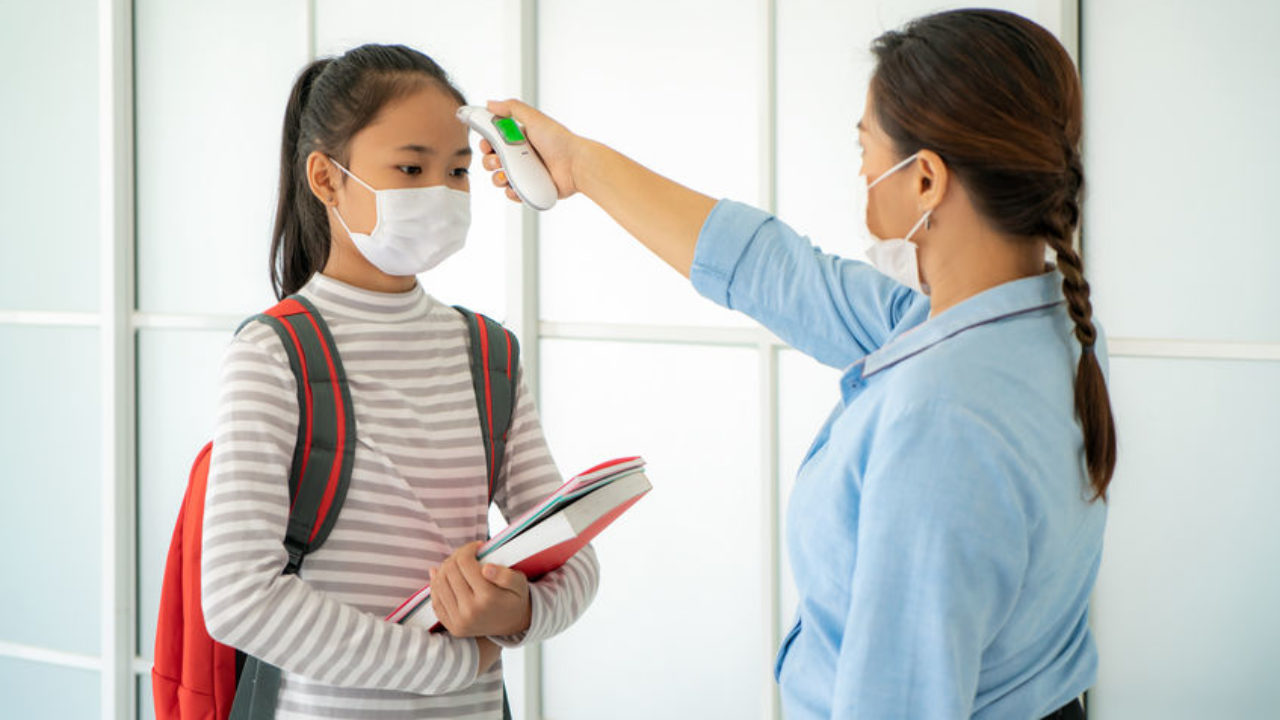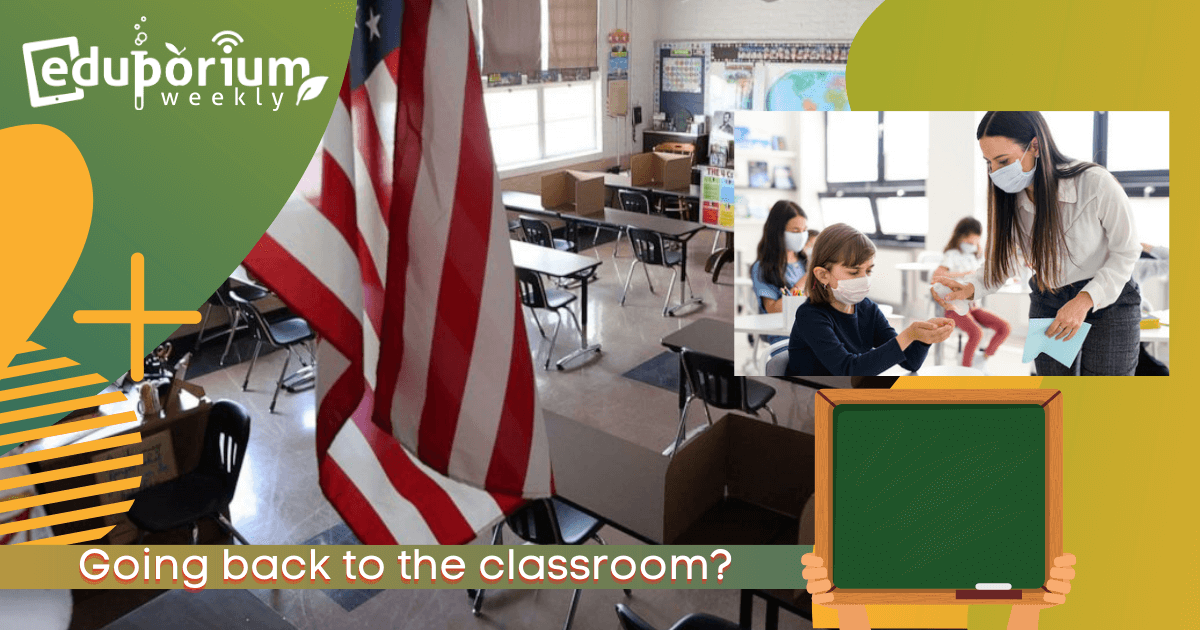The topic of physically reopening schools is super pervasive especially all across the education world. It’s also unfortunate that this topic has become as associated with politics as it has and parents and educators feel that their state, local, and national leaders are not considering the safety of children, families, and all of the staff members it takes to handle many operations in schools. Without trying to take sides, we definitely understand that it would be better for children to be in the classroom. But, from a realistic point of view, we know there’s more to it than that. And, the teachers who are expected to show up and put their own health on the line know it, too. We share some of the overlooked concerns and perspectives as they contemplate multiple aspects simultaneously.
Immediate Concerns Some Teachers Have
We’ve seen the pandemic take its toll for months now and it doesn’t really appear that it's anymore under control. With just weeks until schools begin reopening, teachers and other staff members are facing a new kind of anxiety. While they all undoubtedly want to be there for their students, meet the new kids they’ll be teaching, and spend time in their classrooms, they don’t all think that is the best option health wise. Some classroom educators might have a choice when it comes to whether or not they return to the school if they are open, but not all do. Some may have to do what school or district leaders say and others might not be stable enough to quit. This creates more stress on top of the fact that they could be walking into an unsafe area every day.
On the flip side, however, there are certainly those teachers who'll feel that teaching and learning remotely will hurt their students and slow the inevitable reopening of schools and that return to normal. It’s certainly true that students probably aren’t learning as much as they could be. Plus, the social connections that are such a huge part of childhood are taking big hits as well. Whether you’re in favor of in-person education or not, the risks are seemingly clear and we’re all pretty aware of the shortcomings associated with distance learning by now. Placing groups of students and teachers together in a classroom is definitely now on the riskier side. If one student catches COVID-19, remains asymptomatic, then brings it home with them, that spells trouble for that student, their family members, classmates, educators, and kids on the same bus.
You've likely heard this throughout the teacher community, but some educators are literally spending the summer writing or updating wills. On top of adding face masks or shields to their back-to-school shopping list, this became another contemporary responsibility for teachers. Then, we have the ones who get furious over that implied connection between reopening schools and the economy's performance. Beyond all that, there are, of course, some other small concerns that educators have shared. These include wondering how to enforce social distancing rules or get kids to keep masks on all day. Finally, some educators feel they are now expendable. Others think this is a big experiment and some cannot wait to return to school, no matter what conditions are. It all comes down to how you feel, it seems.

Everyday School Practices that Will Be Different
The school day as we know it is pretty much a thing of the past—at least for now. If any students are lucky enough to physically go back to schools this year, their experiences will be very different. Maybe this won’t be a huge deal for young students who haven’t done the same thing for years. But, on the other hand, they might struggle with following rules that are now in place. Those huge differences will come into play before even entering the school and involve how students will ride the bus. For safety, school bus capacity will be limited as students sit in staggered formations on varying sides of the aisle. The bus won’t be for everyone, however, as educators insist the safest option is for parents to drop kids off.
The manner in which the students and teachers enter the school building will be different as well. Physical distancing will be in place and, for many, temperature checks will occur before entering buildings, creating traffic outside. In an ideal world, someone could administer rapid coronavirus tests to the students as they file into the buildings. This would help identify even asymptomatic cases, but this is pretty unlikely in most places—at least for a while. Teachers are also worried about parents ignoring warning signs (or simply not taking them seriously) and sending a child to school if they have a simple sore throat or a slightly elevated temperature. Some have also suggested pausing or altering rewards for perfect attendance and reward children for staying home if feeling poorly.
If worried that mask policies won't work when schools reopen, teachers could share consistent messages and hold everyone accountable. While some educators are planning to utilize clear face shields instead of masks so that students can see their faces, some experts warn that there is no clear proof that shields are as effective as masks. In classrooms, education leaders have recommended using a cohort system to trim class sizes and keep the same students together. While this is a nice safety tactic, it leaves educators with the burden of trying to strategically create these cohorts or managing what other people create—not ideal for teaching and learning. Mix in constant sanitizing and these teachers being responsible for disinfecting between classes and plenty of concerns pop up.
Fears About Remote Learning
While there’s a political and, for some reason, an economic angle to physically reopening schools with the start of the year, we’re trying to stay more concerned with the academic side. And, yes, students would be much better off with in-person schooling five days a week. Quite frankly, so would educators. Getting back into the normal swing of things is certainly the No. 1 goal for teachers, administrators, parents, and kids—if not for the academic benefits, for the social ones as well. Isolation has undoubtedly taken a toll on children and educators and, although we learned a lot about what to do and not to do throughout the spring edition of distance learning, educators still know it won’t be perfect. Besides inadequate educational experiences and continued isolation, there are plenty of other concerns, including, most notably, access.
Many of us take Internet access and easily picking up a laptop for granted. The truth is not every child can say the same. Since schools shut down, we all realized how big this problem was and how real the Digital Divide is. It happens for a few different reasons and affects students of different demographics. One group it plagues is those who live in extremely rural areas. It's not uncommon to not have Internet access or for it to be too unreliable for connecting through live videos. Then, there are the inner-city students in areas with high poverty rates. They, too, tend to lack Internet access or their parents can't afford plans. Seeing this in the spring exposed something we kind of thought existed but didn’t fully understand and, though some of our educators support airing educational programming on TV to increase accessibility, it hasn't taken off.
Then, there’s the fear teachers have of finding time to create lesson plans, hold classes, meet with children who might require extra help, provide feedback, and, if they are teaching in a hybrid model while reopening their classrooms, potentially create multiple lesson plan versions at times. Some of them also need to track children down to get them to show up for class or turn in assignments. On top of this, not all students have devices for getting online—or they have to share them with siblings. Hopefully, in enough districts, this has improved over the summer, but it’s certainly a case-by-case basis and not a guarantee. Finally, for younger students, particularly in kindergarten, they almost always need a parent to keep them on task in meetings. While it sounds tough, the plus side is there’s less of a chance of getting sick.

Part of the Process
We’re starting to learn more about the plans in the country’s largest school districts, which include remote learning, hybrid reopening, and an attempt at in-person education. There are teachers who feel unsafe with fully returning to normal and others who aren’t comfortable going back part-time either. Then, there may be those who aren’t concerned about the potential health risks and just want education—as well as the rest of the world—to go back to the old normal. Whatever side you ultimately take, one thing is consistent among educators: they expect to be a part of that decision-making process on what education will look like come fall. While some district leaders have gone out of their way to accommodate this, unfortunately, educators in some places—the very people who will be the most at risk—weren’t even a part of the process.
As of right now, 20 of the nation’s 25 largest school districts will be fully remote to begin the year. For those smaller districts where remote learning is not the first choice, teachers, however, have insights into the day-to-day happenings that, in reality, occur within a classroom. It’s not to say that school board members and local legislators don’t, but, as always, their thoughts are not necessarily as aligned with reality as those of longtime teachers. For many teachers, having the government demand they return to a classroom without assuming the same health risks is unacceptable. Many of them feel that school reopening plans from state leaders are incomplete and that they were brought into these conversations or, in some cases, to testify at hearings much too late in the game. Even when included, not all teachers' concerns wind up in these final versions of agreed-upon plans.
When educators are excluded from these discussions, it often leads to their frustration with administrators. The focus goes beyond choices of in-person or remote learning, extending to how learning is structured in schools and online. For remote learning, administrators should provide devices and technology support to students and teachers, consider various innovative, student-centered teaching methods, and reevaluate traditional grading styles. In the case of in-person learning, safety measures must be strictly enforced, and teachers' input on effective strategies to ensure physical distancing among young children should be part of the process. Teachers possess valuable insights into children's behavior in new environments. Officials who involve teachers in reopening discussions show greater support for them.
Opting Out
Now, for one of the other hot topics surrounding the return to school: Opting out. Besides being left out of discussions, many teachers must then do what their administrators say. One alternative to this is that they retire, which many of them certainly are. We do understand that it would be hard financially on any school district to offer a paid opt-out option for teachers in the same way that NFL players have been opting out of the upcoming season for health concerns. But at the very least, couldn’t they assure them of their jobs when they’re ready to return to the classroom? Though that may be later in this school year (or next year), it’s just a thought for a possible solution. Of course, it would need a lot of hammering out and fine tuning.
Some teachers might already be thinking about why this is not an option for them especially since students from various school districts around the country have their own option to opt out of in-person learning. But, here’s the kicker. If their school building is reopening for in-person instruction—whether on a full-time basis or on a hybrid plan—the educators who teach them then have to create lessons and assignments for those kids who are exercising that right to stay home and learn remotely! So, how does that even help teachers!? On one hand, this exposes them to fewer students and anyone who those students are often around. But, it also creates more work for them—making this option seem less appealing, especially as time goes on.
But, wait, there's another catch. Besides creating lessons and checking on students, teachers may have to livestream in-person classes for children at home. You might think that’s fine since they were teaching over the Internet last spring, but that was different. They weren’t doing so with some students in the room. They also weren't doing that from a classroom while staying in view of a camera. Then, what if a student in class has a question and children at home can’t hear it? More time wasted with explanations. Not to mention, for this type of reopening, teachers would have to learn to record lessons. Sending them to students and live-streaming successfully would take time to test and perfect. So, they don't get to opt out and, once again, have tremendous amounts of work—all for students. While they might be emotionally willing to assist this much, they're also physically drained.
For the latest EdTech, STEM, and 21st century education news as well as content surrounding the return to school, follow Eduporium on Twitter and Instagram, like us on Facebook, or sign up for our newsletter to learn more about how we can help you navigate your return-to-school plan! Do you have a cool idea for the next Eduporium Weekly theme? Send us a message on any of our social media accounts!



